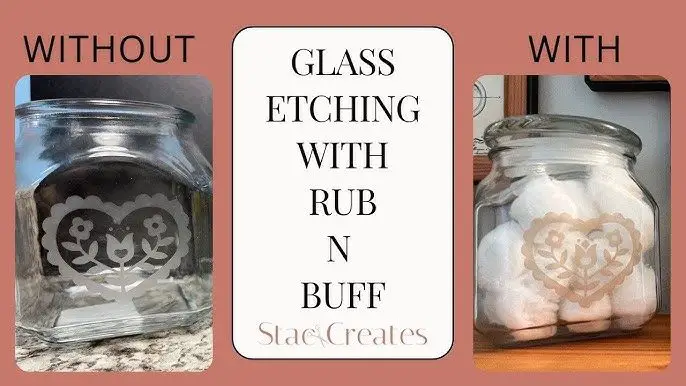What Are Storage Racks And Shelves Used For?
Storage racks and shelves are structures designed to hold, organize, and provide access to items in homes, warehouses, retail stores, offices, and other locations. They come in a wide variety of sizes, shapes, and configurations to suit different storage needs.
Racks refer to large, heavy-duty structures made of steel or heavy-gauge wire used to store bulky, heavy items like pallets and drums. Shelves are lighter structures, often made of wood, metal, or plastic, used to store smaller, lighter items.
The key benefits of storage racks and shelves include:
- Increased organization and efficiency – items can be neatly arranged and easily located.
- Maximized storage capacity – vertical storage makes the most of available space.
- Protection of items – storage off the floor protects items from dirt, moisture, pests.
- Safety and stability – sturdy racks prevent injuries from falling objects.
- Convenience – items are readily accessible when needed.
With their versatility, storage racks and shelves are invaluable tools for organizing possessions and optimizing storage in homes and businesses.
Warehouses
Warehouses often utilize storage racks and shelving to efficiently organize inventory and optimize storage space (Source: https://www.sjf.com/rack-systems.html). There are several types of warehouse racks and shelving, including:
Pallet racks – These heavy-duty racks are designed for storing pallets loaded with products. Forklifts can drive in the pallet racking aisles, facilitating quick loading and unloading (Source: https://www.lyonworkspace.com/cat/storage-racks/pallet-racking/).
Industrial shelving – Durable shelving units that can hold heavier items. Often made of steel with adjustable shelves (Source: https://www.shelvingdirect.com/warehouse-shelving).
Proper warehouse racking improves inventory tracking, order picking efficiency, and storage capacity. The racking style is customized based on factors like inventory turnover rate, weight limits, and accessibility needs.
Retail Stores
Shelves and racks are vital to the organization of retail stores. They allow stores to neatly display merchandise, making items easy for customers to browse and shop. Shelving creates an organized look that is pleasing to customers. Different types of retail shelving are used throughout the store:
In the retail floor and displays, gondola shelving, slatwall panels, and gridwall panels hold and highlight merchandise. These fixtures allow flexible merchandising, adjustable shelf heights, and attractive visibility of products. Specialty racks like jewelry displays, apparel racks, and shoe racks neatly show off specific product types. See examples of retail store shelving at websites like ShelvingDepot.com.
In the retail stockroom, open and closed shelving units keep inventory organized and accessible. Wheeled racks and mobile shelving maximize storage capacity while allowing flexible access to stock. Proper stockroom shelving improves inventory management and order fulfillment efficiency.
Having the right shelving systems allows retail stores to operate smoothly, maintain organized merchandise, and promote sales. Shelving improves the customer experience while also optimizing a retailer’s behind-the-scenes operations.
Libraries
Library shelving systems are designed to efficiently store and organize books, magazines, media, and other library materials. Many libraries use specialized shelving units that allow compact storage through moveable aisles. These compact library shelves, like the high-density mobile systems offered by companies like Demco and The Library Store, maximize storage space as shelves can be pushed together when not in use.
Compact shelving is popular for libraries with space constraints. The mobile units allow aisles to be created on-demand, providing easy access to materials. Many models include wheeled bases for portability. Features like end panels, book stops, and locking casters provide stability and safety. Shelves are typically adjustable to accommodate items of various sizes. Industrial-strength compact shelving can support the heavy weight of books and withstand frequent use.
Home Garages
Garages in homes provide additional storage space and are commonly used to store tools, lawn equipment, sports gear, holiday decorations, and more. Wall-mounted shelves and freestanding storage racks are ideal solutions for organizing garage items and maximizing vertical space.
Wall-mounted shelves such as metal wire shelves or heavy duty polymer shelves can be installed along garage walls and hold items like paint cans, cleaning supplies, and spare auto parts. Shelves come in various lengths and load capacities to suit different needs.
Freestanding storage racks provide floor-based organization options. Racks like overhead ceiling mounts allow for parking vehicles underneath while maximizing height storage above. Other popular freestanding options are modular wire shelving units, steel shelving, and plastic shelving.
When selecting garage storage racks and shelves, key considerations are load capacity, dimensions, durability, and ease of installation. Properly organizing garages makes items more accessible while protecting them from damage.
Kitchens
Kitchens often contain many items that require storage and organization, such as food, dishes, cookware, appliances, and more. Storage racks and shelves are commonly used in kitchens for pantry storage, spices, pots and pans, and general kitchen organization.
Pantry shelving is essential for organizing dry goods, canned goods, and other food items. Adjustable pantry racks allow you to customize the shelf heights to fit various product sizes. Some popular options include wire shelving, solid wood shelving, and slide-out drawers for easy access to items in the back. Spice racks help keep spices organized and make them easily accessible while cooking. Wall-mounted or countertop spice racks with tiered shelves keep spices neatly in one place.

Pot racks free up precious cabinet space by storing pots, pans, and lids vertically on a ceiling-mounted rack. Hanging cookware from a pot rack makes items visible and within reach. Pot racks come in various materials like stainless steel, bronze, iron, and wood. For general kitchen organization, open shelving, cabinet organizers, and wall-mounted rails provide storage solutions for everything from dishes to appliances. Products like adjustable shelves, drawer dividers, and lazy susans promote an efficient, clutter-free environment.
Bathrooms
Bathrooms often have limited space, so finding creative storage solutions is key. Shelving units like wall-mounted medicine cabinets and floating shelves help maximize vertical space for items like towels, toiletries and medicines (Good Housekeeping). Drawers built into vanity cabinets or freestanding organizer units with drawers are useful for containing smaller items. Slide-out trays or lazy susans in cabinets provide easy access to items stored in the back. Corner shelves utilize awkward empty spaces. Baskets or bins on shelves corral and conceal clutter. Tension rod shower caddies hold bottles while saving shelf space. For countertops, standing toothbrush and makeup organizers prevent clutter while keeping items handy.
Laundry Rooms
Laundry rooms are a common area in homes where storage racks and shelves can help organize laundry essentials. Wall-mounted drying racks above the washer and dryer provide a place to hang-dry clothing and linens (Source). Freestanding metal drying racks are useful for laying flat items like sweaters and delicate fabrics. Sturdy laundry hampers with divided compartments keep dirty clothes separated by lights and darks or by family member.
Laundry room shelves create vertical storage to hold laundry supplies like detergent, stain removers, fabric softener, etc. Baskets and bins on the shelves corral smaller items. Hanging storage like wall racks or over-the-door organizers provide a spot for irons, steamers, ironing boards and more (Source). Proper storage and organization helps maximize the usefulness of the laundry area.
Offices
Offices of all sizes utilize storage shelves and racks to help keep supplies, files, and books organized. Many offices use metal shelving units with adjustable shelves to store binders, manuals, and office supplies. These metal shelving units allow the shelf heights to be adjusted to accommodate materials of different sizes.
For storing books and manuals, many offices use wooden bookshelves. The shelves allow materials to be organized alphabetically for easy retrieval when needed. Some popular options are open shelving units or enclosed cabinets with shelves. Enclosed cabinets help keep books clean and free of dust.
Wall-mounted shelves are also common in offices for storing frequently used supplies within arms reach. Wall shelves allow quick access to items like pens, tape, scissors, and other desk supplies. They help keep these items organized and closeby, while saving space on the actual desk surface.
Conclusion
Storage racks and shelves are invaluable because they allow efficient organization and storage of materials and products in a variety of settings. Major uses and benefits include:
- Maximizing warehouse and retail space by stacking inventory vertically on shelves, racks, or pallet racking (cite https://aurorastorage.com/resources/additional-resources/importance-appropriate-storage-shelving/). This improves warehouse operations and allows retailers to display more products.
- Libraries rely on shelves and library book storage racks to organize materials and make them easily accessible to patrons (cite https://aurorastorage.com/resources/additional-resources/importance-appropriate-storage-shelving/).
- Home garages, kitchens, bathrooms, and laundry rooms utilize storage racks and shelves to keep items neat, tidy and within reach.
- Offices stay organized with the help of shelves for files, books, and supplies. Adjustable shelves allow flexibility.
In all settings, storage racks and shelves promote organization, space efficiency, access, and tidiness. Their benefits make them a staple across warehouses, businesses, institutions, and homes.





